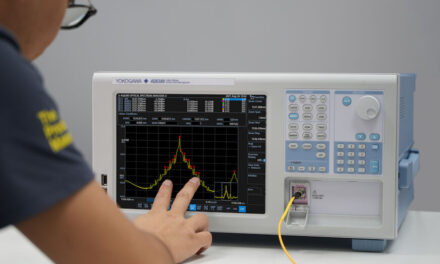 HiWave Technologies has launched the Farina platform – a combination of bending wave transducer and electronics that is said to revolutionise the way audio signals are delivered to the listener.
HiWave Technologies has launched the Farina platform – a combination of bending wave transducer and electronics that is said to revolutionise the way audio signals are delivered to the listener.
When mounted onto the frames of spectacles, such as those used for 3D gaming, the Farina transducer stimulates the outer ear, or pinna, with a broadband audio signal, turning the spectacles into headsets. The user then hears via a fusion of airborne sound and soft tissue conduction into the inner ear. According to the company, the technology does not generate damaging pressure transients inside the ear.
Where glasses are not needed, the platform can also be used to produce other types of headset.
Farina transducers effectively turn the ear into a micro-loudspeaker but do not block external sounds that are received in the normal way via the ear canal. The human brain is adept at differentiating between the audio sources so the technology is ideal for sensory-immersive applications such as multi-user gaming, and augmented and virtual reality. It also provides safety benefits for sportsmen such as cyclists because they can enjoy music on the move whilst maintaining complete awareness of their surroundings, including approaching cars.
A suite of patent grants and applications protects HiWave’s developments in the Farina transducer.
James Lewis, HiWave’s CEO, commented: “The goal for our customers will be to create eyewear that incorporates miniaturised display and audio components, and are completely wireless. With Farina audio, the mini-transducers will be embedded into the arms of the glasses where they touch the ears, and the amplifier circuitry will be a single chip that, together with the Bluetooth or other wireless chip will disappear into the frame. Our low-power techniques minimize the battery size so that this to can become an integral part of the frame. I believe that technology will open the eyes of product planners, marketing executives and industrial designers to consumer electronics concepts that have never been possible to implement before.”
HiWave is currently demonstrating proof of concept to large companies and will have production-ready transducers available in Q4 2012.


